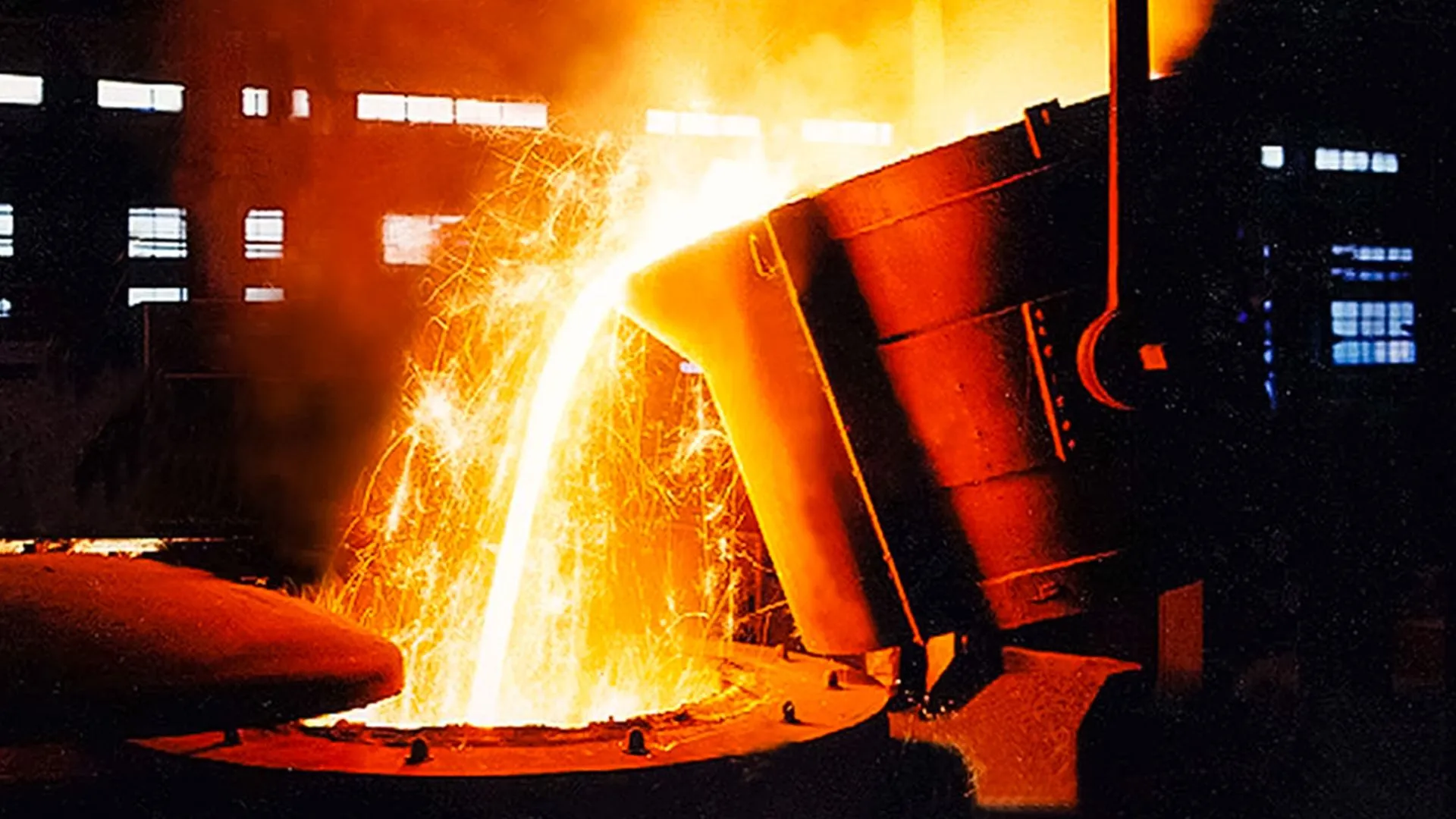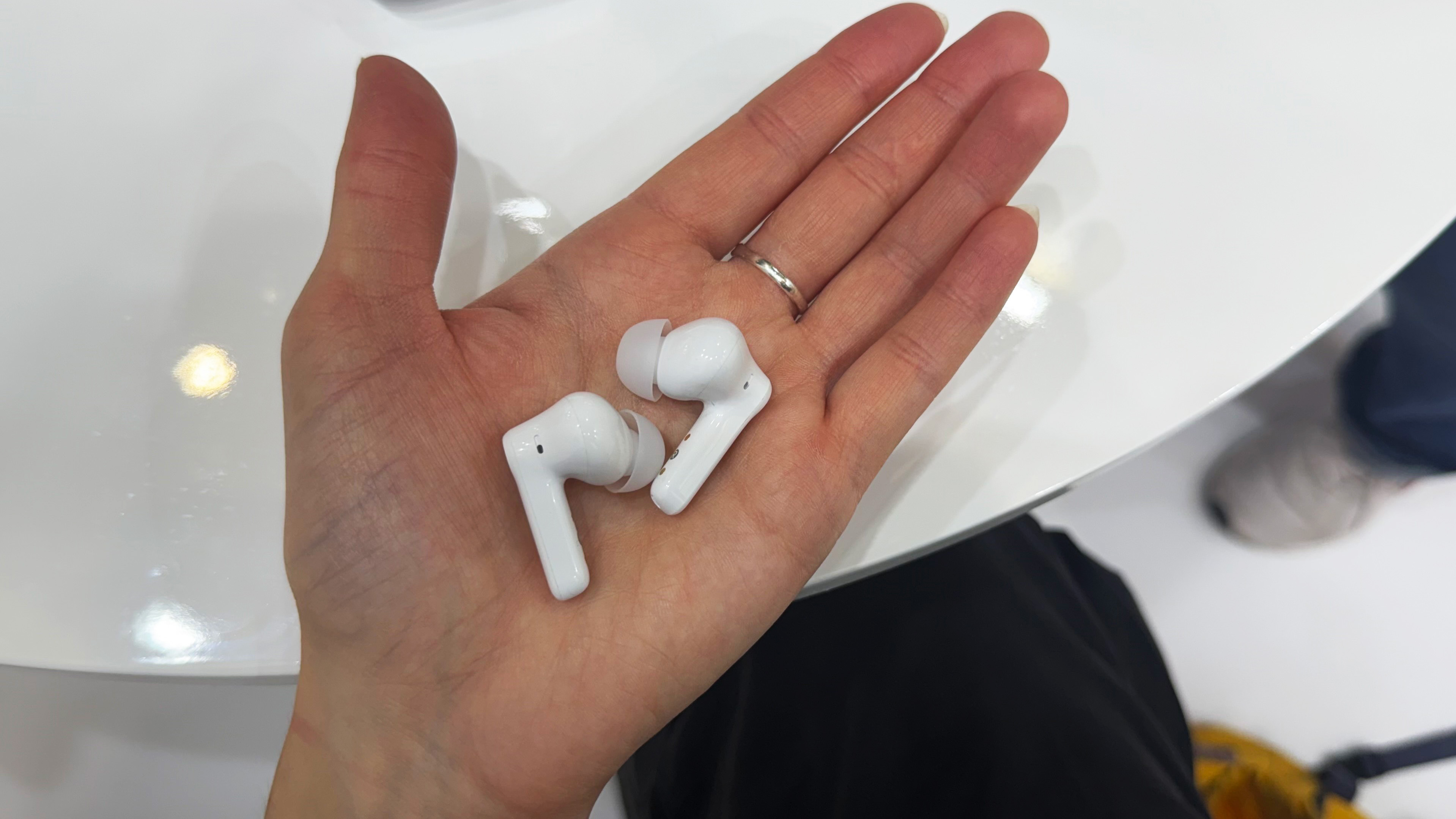
Long-reigning blast furnaces, the old “daylight machines” fueled by coke, are emblematic of steel’s carbon legacy. Today, the sector still emits on the order of 2.6 billion tonnes of CO₂ per year—roughly seven to nine percent of global CO₂ emissions—making steel one of the world’s largest industrial polluters.
This legacy stems from over a century of coal-based metallurgy. Every ton of steel made in a traditional blast furnace produces roughly 2.3 tonnes of CO₂ and requires about 770 kg of coking coal.
Even as steel recycling has grown (modern blast furnaces now use about 30 percent scrap steel, and the overall recycling rate is close to 85 percent), the industry’s sheer scale keeps it in the climate spotlight. According to Worldsteel, every tonne of virgin steel mined and smelted released about 1.89 tCO₂ in 2020.
The only way to undo the carbon legacy of 1960s blast furnaces is to transform core processes, a task made urgent by new carbon taxes, investor mandates, and customer demands.
As one recent survey notes, 81 percent of investors now agree that “green steel” cannot be produced with fossil fuels. Markets and regulators are converging on tough targets: the IEA says steel must cut emissions by roughly 25 percent by 2030 to stay on a net-zero-by-2050 path. In short, today’s engineers face an unprecedented mandate: re-engineer steelmaking itself to ditch its coke- and coal-intensive past.
Electric arc furnaces and hydrogen: The emerging toolkit
The technology toolkit for low-carbon steel is coming into focus. The electric-arc furnace (EAF)—long-used in secondary (recycled) steel—is now being refitted for primary steel production, and hydrogen-based direct reduction is rising fast. In an EAF, electric arcs melt steel scrap (and increasingly sponge iron) instead of burning coke.
This shifts emissions from burning fuel on-site to the electricity supply—meaning an EAF running on renewables can cut CO₂ dramatically. In practice, steel from a scrap-fueled EAF emits roughly 0.67 tonnes of CO₂ per tonne of steel, compared to 2.3 tCO₂ for a blast furnace. That’s a 71% reduction in CO₂ intensity for the “cleanest conventional route”. However, scrap supply limits EAF growth: only about 30 percent of iron now comes from recycled scrap, so raw ore routes must still exist.
To tap raw iron ore without coal, the industry is adopting direct reduced iron (DRI) furnaces. In a DRI plant, iron ore is chemically reduced in a vertical shaft to “sponge iron” (direct reduced iron) using a reductant gas. Traditionally, this gas has been reformed natural gas, but now projects are shifting to hydrogen.
Green hydrogen (made by electrolyzing water using renewable power) can strip oxygen from iron ore while producing water vapor instead of CO₂. The sponge iron is then melted in an EAF or upgraded (as hot briquetted iron or HBI) for an EAF. Importantly, these DRI–EAF routes marry established equipment with new chemistry.
Global roadmaps foresee a huge role for H₂-DRI/EAF. The IEA projects that about 44 percent of steelmaking could use hydrogen-based DRI by 2050, while other scenarios (like BloombergNEF’s net-zero outlook) put H₂-DRI/EAF at approximately 64% of primary steel by mid-century. In essence, green steel will flow from a mix of recycling (EAF with scrap) and greener virgin iron routes (H₂-DRI/EAF, or DRI with carbon capture at source, or CCS).
A recent analysis notes that conventional EAF plus renewables is already the least-CO₂ option today, while H₂-DRI/EAF can be called the ‘star performer’ for near-zero steel—albeit still expensive without support. By contrast, a natural-gas DRI + EAF already exists: it emits ~1.65 tCO₂/t steel, cutting emissions by about 29% compared to the conventional blast furnace-basic oxygen furnace (BF-BOF) route.
Hydrogen itself is in focus. An EAF can also inject hydrogen (or biogas) alongside oxygen to boost decarb. But the main breakthrough is replacing carbon as the iron reducer. As a Global Efficiency report puts it, the shift from “coal-based steelmaking to utilizing green hydrogen in direct reduced iron production (H2-DRI) represents a great opportunity for producing low-carbon steel.”
Producing sufficient H₂ is the engineering challenge: roughly 50–60 kg of H₂ is needed per tonne of steel (on a per-tonne-of-DRI basis). That translates to on the order of 300–600 MWh of electrolyzer capacity per tonne of steel annually—which is a scale orders of magnitude larger than today’s hydrogen use.
Chinese and European players are already bidding—for example, a coalition in Inner Mongolia aiming for a 1 GW electrolyzer by mid-decade. If electrolyzer costs fall (China projects green H₂ cost down to about $2.4/kg by 2030), H₂-DRI/EAF could even undercut coal-based steel.
Recent analysis shows that at roughly $1.5/kg H₂ and a modest carbon price ($15/tCO₂), green H₂-DRI/EAF becomes cheaper per ton than conventional BF-BOF (even compared to scrap-EAF). In short, while the EAF + DRI + H₂ combo is capital-intensive, it is the most promising path engineers see for nearly zero-emission steel.
Inside Thyssenkrupp’s green hydrogen steel plant
In Duisburg, Germany, a decades-old steelworks is getting a green overhaul. By 2027, Thyssenkrupp Steel Europe plans to bring online one of the world’s first large-scale hydrogen-driven DRI plants.
The design resembles a modern blast furnace island, with rail hoppers for ore, gas reformers, a 40-meter DRI shaft (“tower”), and downstream electric furnaces – but instead of coke, it will use hydrogen-rich reduction gas. Thyssenkrupp engineers describe it as “one of the world’s largest industrial decarbonization projects”.
At full capacity, the plant will produce 2.5 million tonnes of sponge iron per year, requiring roughly 143,000 tonnes of hydrogen (on the order of 220 MW of electrolyzer running continuously). That hydrogen comes via the planned “core network” pipeline in the Rhine-Ruhr; in effect, green H₂ flows into the mill.
Crucially, the project signals that even massive integrated mills can pivot. Thyssenkrupp estimates this single plant will cut 3.5 million tonnes of CO₂ per year at Duisburg—nearly 20 percent of the site’s total emissions and roughly 5% of all Ruhr-region emissions. As a company spokesperson emphasizes, “there is no way around decarbonizing CO₂-intensive steel production in the long term”. They “remain committed to green transformation and climate-neutral steel production” by 2045, with this plant a critical first step.
Building such a plant is an engineering tour de force. It requires deep expertise across multiple domains: metallurgy to control steel chemistry without coke, chemical engineering to manage high-temperature H₂ reduction, and electrical/mechanical skills to integrate new reactors with existing mills.
Thyssenkrupp reports that “the DR plant is the first of its size to be operated with hydrogen, [so] a great deal of expertise is required,” and that engineers from metallurgy, mechanical, chemical, process, and electrical fields must work in tandem. Control-room operators and millwrights will need new training on hydrogen safety and new sensor suites; chemists must monitor oxygen-extraction with H₂ instead of carbon; and automation teams must coordinate the reformers, recycle loops, and smelters. Early staffing plans indeed emphasize retraining existing crews.
The company is already refurbishing an EAF to melt the sponge iron and adding new conversion furnaces for downstream steelmaking, all designed to drop in once the hydrogen is flowing. In short, the Duisburg project is both a pilot plant and a blueprint, showing how legacy steelworks can hybridize blast-furnace islands into modern, multi-technology hubs.
Global patchwork: Who’s moving fast, who’s lagging
Steel decarbonization is uneven worldwide. Nordic Europe is racing ahead: Sweden’s SSAB (Hybrit joint venture) already operates a pilot H₂-DRI and will convert its Luleå steel plant to hydrogen by 2035, aiming for zero-carbon steel by 2045. Finland’s Outokumpu and Germany’s Salzgitter have announced similar plans.
In China, the world’s topmost steelmaker, policy is murkier but capacity is huge. The Chinese government has set targets for 50 percent non-fossil power by 2030 and massive new wind/solar build, enabling green hydrogen corridors. Domestic giants (Baowu, HBIS, etc.) are building pilot H₂-DRI lines (Baosteel plans to lower carbon by 50–80% with H₂ DRI from 2026). The China Hydrogen Alliance even forecasts green H₂ costs of $2.40/kg by 2030, suggesting Chinese mills could be competitive.
Despite China’s massive coal use, local renewables plus policy shifts are spurring projects. For example, the world’s largest green H₂ investment—a US$4.5 billion electrolyzer—was announced in Inner Mongolia. On the other hand, provinces with surging demand (Hebei, Jiangsu) still depend on blast furnaces. Overall, China aims to peak steel CO₂ by 2030-35, but detailed sector roadmaps are still emerging.
In India, where coal-coking still dominates roughly 70 percent of steelmaking, interest in hydrogen is growing. Major producers are now piloting it. In July 2025, Jindal Steel announced a project to add 4,500 t/yr of renewable H₂ to its 1.8 Mt DRI plant in Odisha. This “first phase” hydrogen feed into the plant’s DRI will cut coal use by roughly 50 percent and target Europe’s market (anticipating the EU’s carbon border tax).
Tata Steel and JSW Steel have also begun blending biomethane/hydrogen in furnaces. However, India’s national steel policy still strongly favors traditional BF-BOF growth. Without major policy twists or incentives, India’s decarbonization will rely on such incremental shifts and eventual CCUS.
In the United States and EU, climate policies are accelerating change. The US enacted the Inflation Reduction Act (IRA) in 2022, offering tax credits for clean hydrogen (up to $3/kg) and “domestic content” for zero-carbon steel. American mills like Nucor (already an EAF leader) and US Steel (planning a retrofit to H₂-DRI) are tapping this support. The auto and construction sectors, which are huge steel buyers, are also pushing for low-carbon supply.
As the ICCT notes, automakers consume about 12 percent of world steel and are beginning to require “fossil-free steel” commitments. For example, some European carmakers pledge to buy a share of green steel, helping underpin demand—and they calculate this would only nudge up car costs by ≲1 percent.
In Europe, the impending Carbon Border Adjustment Mechanism (CBAM) will penalize high-emissions steel imports, further incentivizing mills in Sweden, Germany, or elsewhere to invest in H₂-DRI/EAF. Australia, blessed with cheap renewables and iron ore, is positioning to export “green iron” (HBI) to low-scrap regions. In short, where regulation and market pull exist, engineers are converting theory to practice; where they don’t, plants risk becoming stranded.
Can green steel compete on cost?
Economics remain the toughest nut. Conventional BF-BOF steel is currently cheapest to make in most places. Global data show BF-BOF costs roughly $390–400 per tonne of steel (plant gate) on average. A scrap-based EAF, surprisingly, is slightly higher (~$415/t) due to electricity and sorting costs. A natural-gas DRI-EAF route runs about $455/t. By contrast, early-stage green H₂-DRI/EAF is $100–200/t more expensive in most studies. One analysis concludes that the “shift to green H2-DRI is initially more costly and results in a so-called ‘green premium’” on steel.
But carbon pricing and incentives change the math. Engineering studies show that with moderate carbon costs (say $15–30 per tCO₂), and if renewable H₂ drops toward $1–2/kg, green routes can match or beat coal. For example, Global Efficiency Intelligence finds that at ~$1.5/kg H₂ and $15/tCO₂, green H₂-DRI/EAF undercuts BF-BOF (which runs ~$539/t including carbon). Even without carbon pricing, some green steel firms target hybrid strategies: zero-carbon credits for excess hydrogen (the US offers $3/kg H₂ PTC) and premium sales for “steel-as-a-service” to EV-makers. On the other hand, high current H₂ prices (often >$5/kg) keep costs up; major investment hinges on scaled electrolyzer manufacturing.
What can be considered an encouraging sign is that innovation clusters and R&D are beginning to bridge costs. Electrolyzer costs have fallen about 60 percent in five years, and are projected to keep dropping with manufacturing scale. Steel engineers are also exploring co-locations (e.g. electrolysis powered by nearby wind farms) to cut logistics.
Public-private partnerships like Germany’s Steelorbis or the US Clean Hydrogen Hubs (part of IRA) aim to de-risk large projects. In summary, the chicken-and-egg problem of low renewable electricity and cheap hydrogen must be solved for green steel to go mainstream. But with the right policy—carbon tax, border levies, clean procurement—that equation looks increasingly solvable.
In sum, steelmaking’s transformation is underway. It’s driven by an industrial imperative, by policy carrots and sticks, and by market demand from major consumers. Some legacy plants have been criticized for clinging to coal, but the tide is turning. If engineers today can scale up lessons from pilots like Duisburg (and Sweden’s HYBRIT, India’s Jindal, etc.), the industry could achieve near-zero steel by 2050. The next decades will decide whether decarbonized steel goes from promise to reality.



